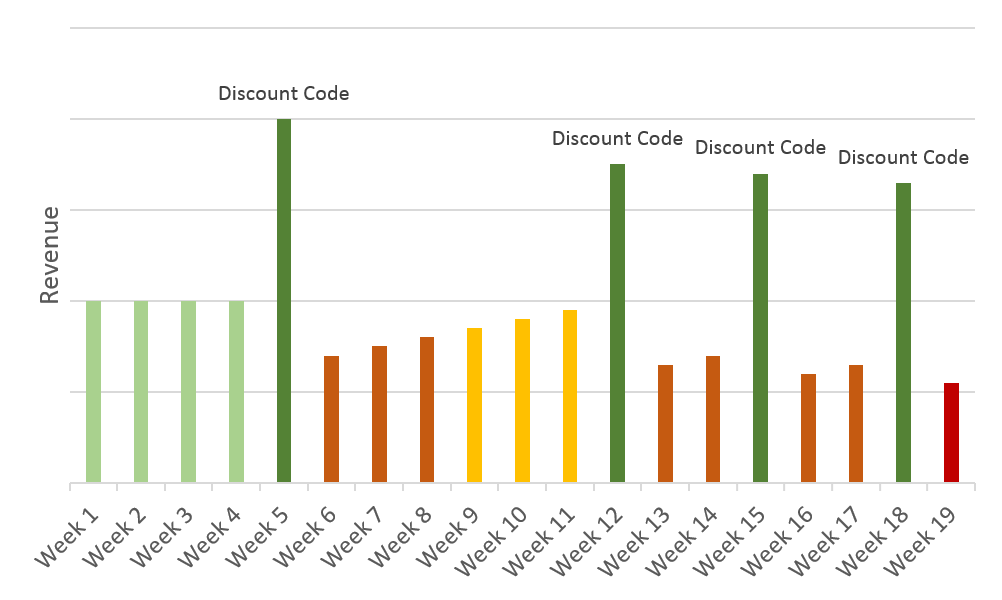
Produced in association with Fospha.
When measuring the effectiveness of discount codes, retailers often get it wrong. In this article, we’ll look at how data-driven attribution can help businesses better understand where discount codes produce the best ROI.
Retailers often don’t consider discount codes in the same way they do traditional marketing spend. On the one hand this seems appropriate; the cost is a percentage of top-line revenue at the point of conversion rather than upfront speculative spend. But viewing them as nothing but a conversion lever can lead to a dangerous disconnect in understanding the true cost of customer acquisition and retention.
In a multi-channel, multi-device world, it’s increasingly hard to acquire and keep customers cost-effectively. Discount codes are an easy and powerful short-term lever for growth that can be activated and ramped up quickly (through deeper discounting and broader availability etc.). But with the temptation their flexibility and impact affords, many retailers now run expansive discount code programmes without understanding their real cost.
The difficulty in tracking the long-term effectiveness of discount codes is compounded by the following factors:
- A reluctance to adopt a cautious approach (A/B testing etc.), as retailers seek to maximise the returns from push far and wide through multiple marketing channels (with testing particularly challenging with affiliate and offline channels).
- For businesses that rely heavily on repeat business, the effect on customer lifetime value is unknown, as retailers try to maximise revenue without conditioning their customers to buy only when discount codes are available.
- Retailers running frequent or overlapping campaigns where it isn’t possible to fully measure the post-discount drop in sales, and it becomes difficult to measure what ‘normal’ performance looks like. This is illustrated in the chart below:
Feast and Famine: A chart showing the effect running discount codes can have (Read more...) business performance.
The good news for retailers is that there’s an alternative to scaling back their discount code activity and running testing that limits top line impact. Data driven attribution modelling – focused on the end-to-end economics of the customer journey – can identify their true value and cost, stitching together all customer interactions through every marketing channel and platform visit over time and across devices. This helps build a complete understanding of the role each channel and lever plays in conversion (and at what point in the customer journey they play that role), so a business can identify where a discount code genuinely contributes to a conversion and where they are cannibalising (either totally or partly) a full-price sale.
By considering discount codes only one contributor in a complex user journey, retailers get better visibility on their value relative to other marketing channels and can distribute spend more appropriately. They can also use the insights into where and when in the journey discount codes should be used to optimise spend on customer acquisition and retention, leading to a more customer-centric approach to discounting that will yield long-term brand health benefits.
Fospha helps businesses use data insights to optimise their customer journeys. Click here to find out more.
This content has been produced in association with Fospha. Click here to read our collaborative content guidelines. Views and opinions expressed in this article do not necessarily reflect those of ClickZ’s.
Related reading
Many businesses invest a great deal of time and effort into knowing their customers - but too few focus on understanding them.





